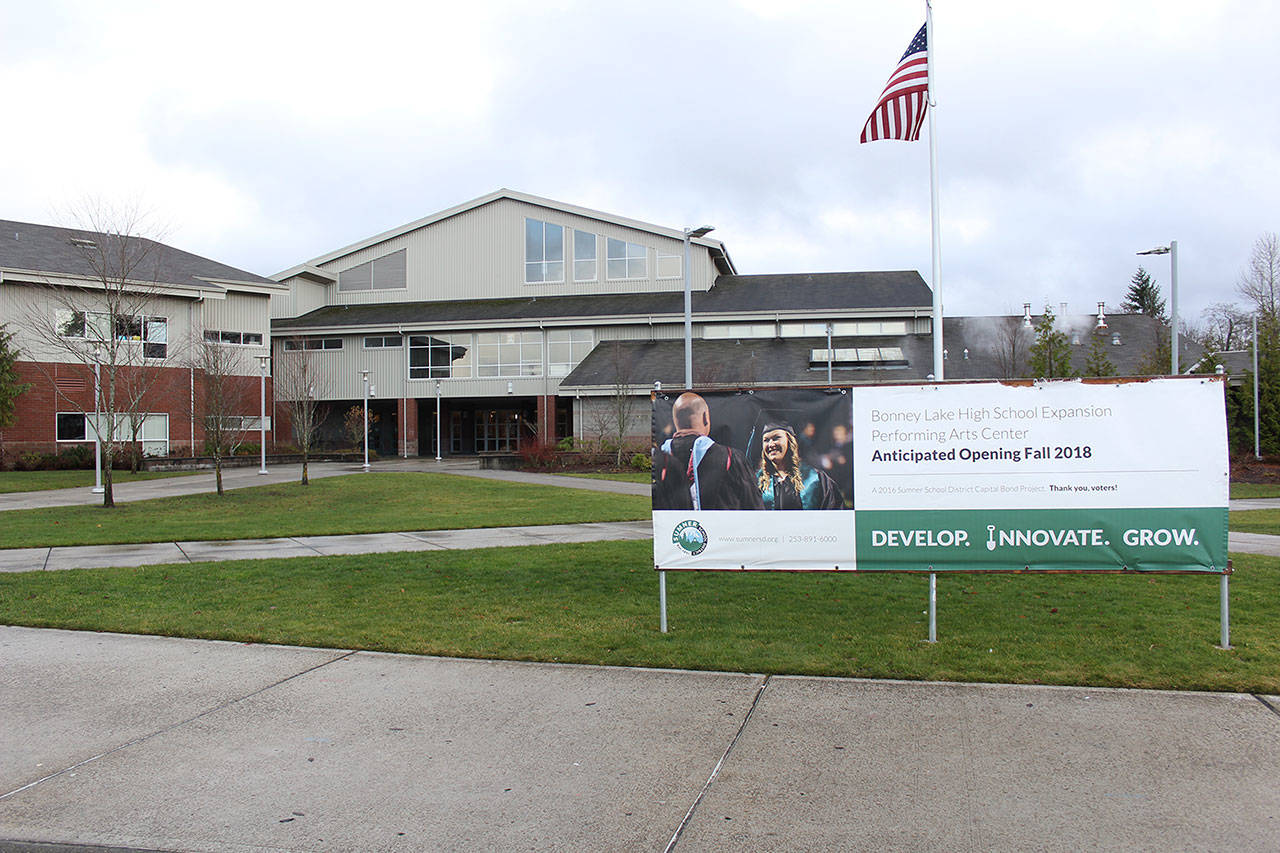With two levies looking to expire next year, the Sumner-Bonney Lake School District Board of Directors is asking residents to approve replacement levies on the first special election ballot of 2018.
The board’s decision to put the two replacement levies on the Feb. 13, 2018 ballot came down Dec. 6.
Voters approved the Educational Programs and Operation Levy and the Instructional Technology Improvements Levy back in 2014 with 65 and 62 percent of the vote respectively in 2014.
The Educational Programs and Operation Levy funds day-to-day district operations not covered by state funding, which includes paying teachers and staff, funds staff training and development, maintains school buildings, makes extracurricular activities and school supplies like textbooks accessible, and helps cover student transportation, health and safety, District Communications Director Elle Warmuth said in a press release.
If approved by voters, the levy amount would be $1.50 per $1,000 of assessed property value, or approximately $450 annually (or $37.50 a month) for property valued up to $300,000, for two years.
This is a big change from the previous voter-approved levy, mostly due to new legislation, which is being called a “levy swap” — as the state collects more money for school districts, local school levies will decrease.
“As the current levy law is written, Sumner School District may only collect $1.50 per thousand, however, the district is also required to estimate a maximum levy authority,” Warmuth said in an interview.
The school district’s resolution says the district can collect “up to” $20 million in 2019 and $24 million in 2020, but the, “actual collection amount at $1.50 per thousand, based on current law, is estimated to be below $14 million each year,” Warmuth said.
This replacement levy is only a fraction of the one voters approved in 2014, which started out as $3.85 per $1,000 in property value, but dropped to $3.44 in 2017.
While the district will be collecting less money from the replacement two-year Educational Programs and Operation Levy, “the state will collect a higher state tax and provide more money (not all the necessary money) to begin to more fully fund the salary of the staffing units provided by the state formulas,” Warmuth continued. “The local dollars under the current legislative funding plan will phase more state money into districts, reducing the amount of local taxes paid for locally decided school expenses.”
Warmuth added that local school district levies will not disappear, since the state’s new school funding formulas don’t include finds for extra-curricular transportation and local staffing decisions concerning campus safety and school health room staff.
“It will take several years for the levy swap to be complete and until then, local tax dollars continue to pay the unfunded or underfunded basic education costs,” Warmuth said.
The district decided to ask voters to consider a two-year levy due to the uncertainty surrounding state funding for the Sumner-Bonney Lake School District.
“It is believed that the Legislative will continue to make decisions in the next two years that may continue to change the formula or the funding that feeds into the formula,” Warmuth said. “Sumner decided to run the shorter term Operations Levy to be able to be more responsive to the outcome of shifting local tax dollars into the state school funding formulas until everything is settled in Olympia.”
THE INSTRUCTIONAL TECH IMPROVEMENTS LEVY
The other levy the Sumner-Bonney Lake School District is asking voters to consider is the Instructional Tech Improvements Levy, which helps give students Chromebooks to “enhance learning and prepares students for the careers of tomorrow,” provides tech training and support for teachers, and maintains the district’s tech infrastructure, the district’s press release stated.
If approved, this measure would instill a levy that averages out to be $0.47 per $1,000 of assessed property value for the next six years: $0.60 in 2019 and 2020, $0.55 in 2021, $0.45 in 2022, $0.31 in 2023, and $0.28 in 2024.
This is expected to produce $30 million over the six-year lifespan of the levy, costing voters with an assessed property value of $300,000 an average of approximately $141 annually, or $11.75 a month.
On paper, this starts out as a higher levy rate than the one voters approved in 2014, but ends lower — the 2014 levy was also averaged at $0.47 over four years, but with a rate of $0.48 in 2015, $0.46 in 2015, and $0.47 in 2016 and 2017.
The levy is increased in its initial rates because, “since the last time we ran the Technology Levy, the student enrollment has increased by over 1,600 students,” she continued. “Beyond the growth in enrollment requiring more devices, the district has begun the replacement cycle for existing computers purchased in the first year of the expiring levy.”
But Warmuth said it is most likely that published rate per thousand will be lower for all six years, based on the assessed value growth in the future.
“In the historic manner, the district collects the total voter approved amount of money and assessed value moves the tax rate down as assessed value goes up,” she added.
This replacement levy is for six years to align with future elections concerning the Educational Programs and Operation Levy, which can only be run every two or four years, whereas a capital levy like the Instructional Tech Improvements Levy can be run every two, four or six years.
“Because we are running a two-year Operation Levy (to allow for all the Legislative dust to settle), the plan would be to run the next Operation Levy for the usual four years by itself,” Warmuth said. “Then when the Technology Levy expires, both levies are on the same cycle on future ballots.”


